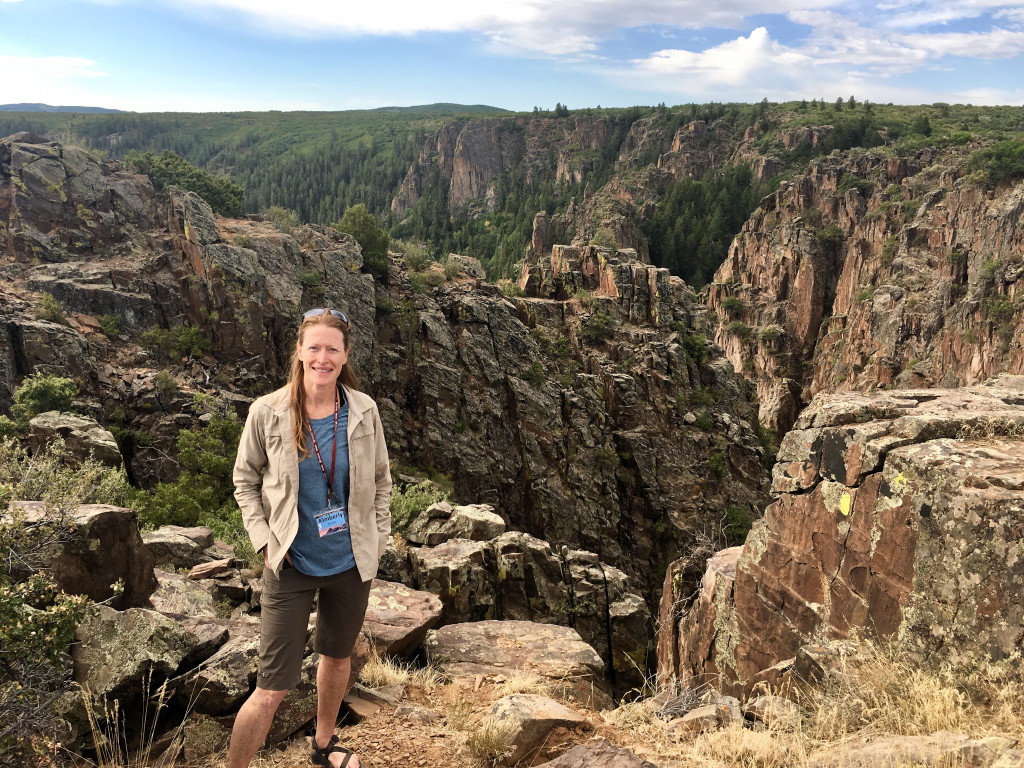Timberlane Middle School science teacher Kimberly Renick spent 18 days this summer in the Colorado, Texas and New Mexico region exploring and conducting research at various canyons, volcanoes and glaciers.
Renick was one of 36 educators from across the United States chosen to participate in Texas A&M’s Geology Camp for Teachers, or G-Camp, sponsored by oil company Saudi Aramco.
From June 26 to July 13, Renick and the group participated in fieldwork research and learned something new about geology — or the study of the earth’s physical structure — they can bring back to their classrooms.
Renick became familiar with the program after staying in contact with a group of teachers she met through a NASA Goddard Space Flight Center Program, which she participated in in 2016, her first year at Timberlane.
“When I got to middle school science, I thought, ‘I gotta step up my game,’” she said. “I need to get more science content and be able to give these kids a reason why they want to come to the classroom.”
Through maintaining professional relationships with teachers she has met through programs and workshops, Renick heard about G-Camp and decided to apply.
Renick said she was eager to participate in the camp in order to keep the science content in her classroom up-to-date.
“Science is ever changing, and that’s one thing you can’t say about all of the other subjects,” she said. “So, staying on top of what is new is really important.”
The group spent the first two days of the camp on the Texas A&M campus, learning about the different sites they would see while out in the field.
“We were classifying rocks and looking at minerals and figuring out how to identify what we we’re going to see,” Renick said. “A rock as a sample in a classroom that you can buy from Flinn Laboratories does not look like a rock out in the real world. It looks like a rock. If you saw it in your driveway you probably wouldn’t know it, you have to sit there and examine it. I was just amazed.”
The first day of field work — most of the days began at 5:30 or 6 a.m. — started with an eight hour drive to Capulin Volcano in New Mexico.
“There’s this whole volcanic field over there of all these shield volcanoes, and [we saw] what the landscape used to look like and where it’s going to go to from here,” Renick said.
In Colorado, Renick and the group were taken on tours of the Colorado National Monument, as well as the Black Canyon of the Gunnison, where the group learned about the formation of the canyon and the lava’s impact.
Through this fieldwork, Renick said she is able to relay what she has seen in Texas, New Mexico and Colorado and compare it to the geology of the Northeastern region.
“There are some dikes and hogbacks over there, but the Delaware Water Gap that we have over here would be compared to there,” she said. “[It’s] helping the kids realize that, yes, the earth is ever changing, it’s dynamic, but in these places, there are some similarities and how to make those connections.”
The program, Renick said, allowed her to look through both a teacher lens and student lens, and the wide range of geology experience among the group provided her with different perspectives.
Dr. Rick Giardino, a professor in the geology and geophysics department at Texas A&M and leader of G-Camp, said in a press release that many of the teachers who participate may have taken one college course on geology, while other may have no prior knowledge.
“This gives them the opportunity to experience geology firsthand, learn the processes as well as be able to collect data, videos and photographs that they can bring back to the classroom,” he said.
Aside from the scenery, the nearly 3,000 miles traveled and the long hikes taken, Renick said the “comradery” between the teachers stood out to her the most.
“The professionalism from the teachers who want to bring back good science and that real science, meaningful, hands-on experience is where the knowledge comes from, it’s not from a book,” she said. “For me to go out and have this experience and bring it back to my kids, and I’m excited about the experience, they get excited and they get motivated for what I’m showing them.”
Renick plans on using what she learned through G-Camp, such as showing videos from the camp as “virtual tours,” and incorporating geology lessons in the iSTEM curriculum, which brings together science, technology, engineering and math.
“My kids are going to read about bedrock and faults, how those faults behave, where those faults are located and the human populations around them. That’s when iSTEM comes in,” she said. “During our earth unit, the [students] will be exposed to fault lines, the behaviors of them and engineering buildings to withstand earthquake levels.”
Renick said that the G-Camp experience allowed her to engage in hands-on science that will be valuable to her and her students this school year and beyond.
“It gives the kids meaning, it gives them a reason for what they’re doing, and that seems to motivate kids to accel in science,” she said. “Having a district that supports that, and corporate sponsors, they put this into it so we can learn the science, so we then will have the engineers and the scientists that we need in the future.”

